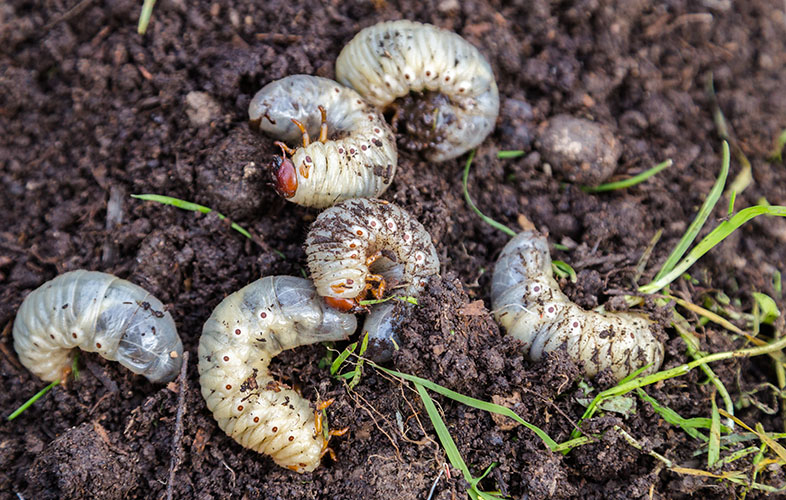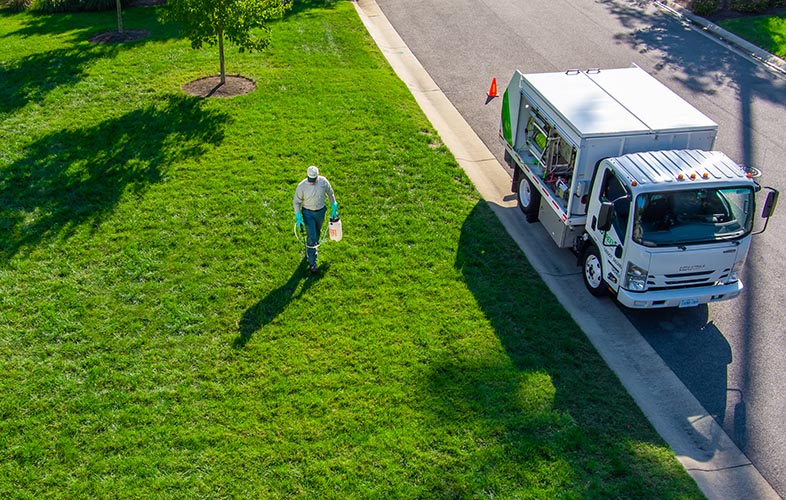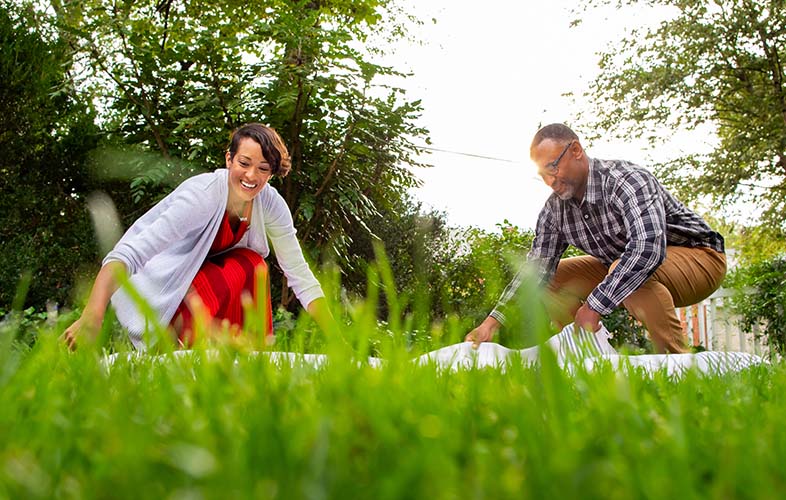3 Signs You May Have Lawn Grubs
Some insects benefit your lawn: earthworms help fertilize the soil; ladybugs eat unwanted pests. Grubs, however, do not fall into the “beneficial bug” category. Grub damage can wreak havoc on your turf, causing green grass to wilt, discolor and sometimes die altogether. But if you suspect grubs in your lawn, all hope is not lost: TruGreen® can help get the problem under control — and our prevention-based approach can stop them from being a problem in the first place. Ahead, learn how to spot the signs of grubs in your lawn — and discover what TruGreen can do to help restore your lawn to optimal health.
What Are Grubs, Exactly?
Grubs are C-shaped, white worms about the size of a small shrimp with 3 pairs of legs that can be found under the turf. In reality, they’re the larvae of scarab beetles. All scarab beetles go through the larval stage during development, which means many different types of grubs may make a home in your lawn.
What Does Grub Damage Look Like in a Lawn?
One or two grubs living cozily under your grass won’t cause grub damage. A large grub population, however, will. Keep reading to learn a few common signs of grub damage to the lawn.
Sign 1: Wilting (That Doesn’t Resolve With Irrigation)
Grubs are a bit like teenagers: they eat a lot. Except, unlike teenagers, their diet consists primarily of grass roots. With damaged roots, your grass cannot access the water and nutrients it needs to thrive. As a consequence, the first sign of grubs is often the presence of wilting, dehydrated grass. A grub-damaged lawn is also likely to become more sensitive to drought conditions, which can result in further damage.
Sign 2: Patchiness and Discoloration
Irregular patches of dry, discolored grass can indicate grub damage to the lawn. The bad news is that discoloration can signify almost anything from heat stress to lawn disease. The good news is that there’s a fairly easy way to check if the damage is, in fact, grub damage. Grab a spade or a garden hoe, and make 12-inch cuts around the affected area in an angled “U” shape (like you’re drawing three sides of a square). Then, pull up the grass and inspect the upper three inches of soil. If you have grubs, that’s where they’ll be.
Sign 3: Grass Is Lifting Off The Soil
Severe lawn damage from grubs can completely destroy your turf’s root system. When this happens, the grass will easily pull up like lifting carpet or new sod. In many cases, this kills the grass — so ideally, you want to get control of your grub problem before it reaches this stage.
How Can You Tell The Difference Between Lawn Fungus and Grub Damage?
As mentioned above, many troublesome signs of grubs in your lawn can appear similar to the damage caused by lawn disease or fungus. Comparing the state of your lawn with pictures of lawn disease common to your area may help, but it’s unlikely to be definitive. As such, you may be wondering: how do you tell the difference between grub damage vs. fungus?
One indication that your grass woes are due to grubs rather than fungus or disease is the presence of grub holes on the lawn. However, these small, often circular holes aren’t caused by the larvae themselves, but by other animals. Critters like raccoons, skunks and birds eat grubs — and they’ll dig them out to get a taste. So if you spot areas of dug-up soil (or notice an unusually high presence of animals congregating in your yard), grubs may be to blame.
Keep in mind, though, that an influx of animals alone isn’t proof that you have a grub problem. To get an accurate read on what’s going on with your lawn, contact your local TruGreen expert.
How Do You Get Rid of Grubs in Your Lawn?
Getting rid of grubs and repairing the damage is challenging and takes time so we like to focus on prevention. And there are a few ways to help prevent grubs from making your lawn a home. First is making your lawn an inhospitable place for beetles to lay eggs. Since beetles are attracted to lights, keeping your outdoor living space dark at night (when possible) may help reduce the likelihood that they’ll come to call. No beetles, no eggs, no grubs. Limiting how much you water your lawn in the summer months may also prevent eggs from developing into larvae.
Of course, preventing beetles from visiting altogether is unlikely. That’s where proper lawn care comes into play. Since grubs feed primarily on grass roots, the best way to minimize grub damage is to ensure you have healthy grass: the more robust the root system, the less likely it is to show damage. TruGreen’s tailored lawn care plans are designed to give your lawn exactly what it needs to thrive — and are timed for optimal results. Plus, our lawn care services are backed by the TruGreen Guarantee, meaning that if you’re not satisfied with your results, we’ll come back to make things right (at no extra cost to you).◆
Ultimately, however, the best way to prevent grubs is with TruGreen’s grub prevention & control service. With this service, your local TruGreen expert will apply a preventative treatment before egg-hatching season to prevent grubs from taking hold. And if you miss your window and do end up with a grub problem, we can help with that too: our curative grub services are designed to get active grub populations under control, fast.
Ready to love your lawn again? Compare our plans and get started on your TruGreen journey today.












